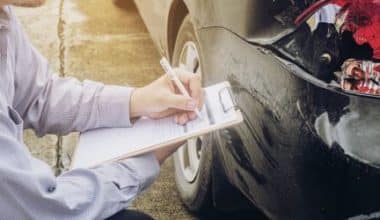One of the most astute moves you can make for yourself and your new car is to get the appropriate auto insurance coverage before making the purchase. It can help you avoid wasting both time and money. Perhaps you’ve wondered, “How do I get car insurance and proof of insurance before buying a car?” How plausible is that? Yes, of course, and this article will guide you in the right direction.
How to Get Car Insurance Before Buying Car
First, let’s cover the fundamentals. Car insurance is protection against financial ruin in the case of an accident or theft of one’s vehicle. Practically all drivers should have one.
In most places, it is against the law to drive away from the dealership without insurance. And if you do wind up damaging something, you’ll have to pay to fix it, which might add up to a large sum. For this reason, it is recommended to implement a policy right away, and various options are available.
Getting Car Insurance Before Buying A Car
It’s important to shop around and compare car insurance policies and companies before committing to coverage for your next vehicle. In this approach, you can discover a package that works for both your wallet and your requirements. You must have proof of financial responsibility in the form of a valid auto insurance policy before you can legally drive your new automobile home. However, if you choose to purchase one without it, here’s what you need to do:
#1. Compare Different Prices.
Comparison shopping for auto insurance quotes is a great way to save money on coverage for your new ride. Get quotes from at least three different insurers with comparable coverage options, then pick the best one. Real auto insurance rates are difficult to get by without a driver’s license and a proven driving record.
#2. Determine What Kind of Insurance Protection You Will Require.
Where you live, what kind of car you want to buy, and your own tastes will all play a role in determining how much insurance you need. The majority of states require at least some degree of insurance. You might want to think about getting a higher level of protection for your expensive vehicle. Complete and collision coverage, two types of optional insurance, are also strongly suggested.
#3. Gather Information for the Drivers You Want Covered Under the Policy.
Before purchasing insurance, you must know the names, birthdates, Social Security numbers, and driver’s license numbers of every driver who will be covered under the policy.
#4. Choose a Coverage Type and Provider
Once you’ve settled on an insurer, you can prepare your insurance in advance by providing all the details listed above in preparation for selecting a vehicle.
#5. Select a Mode of Transportation.
The make, model, year, and Vehicle Identification Number (VIN) of your new car will be required information when purchasing insurance. While the vehicle identification number is required to obtain insurance, you may still shop around for prices in no time.
#6. Complete the Car and Insurance Purchase.
Once you’ve narrowed down your search for a car, you can provide the insurance company with the vehicle identification number (VIN) and complete the purchase of a policy. Make sure your insurance is active before you obtain your new car, as most insurers allow clients to choose the policy’s effective date. Ask your insurer ahead of time if they offer no-downpayment auto insurance so you can spread out your payments over time.
Proof of Insurance Before Buying Car
In the event of an accident or a traffic stop, as well as when registering a new vehicle and renewing your license, you may be asked to present proof of insurance. You will need to provide proof of insurance in the event of an accident or other incident causing property damage in order to demonstrate that you and your car meet the state’s minimum insurance requirements.
Liability insurance is required in all states except New Hampshire, and your proof of insurance can also show that you have other types of insurance, such as collision and comprehensive.
Proof of Insurance Before Buying Car
Before buying a vehicle, you should begin shopping for auto insurance, but you will not be able to finish a policy or receive proof of insurance without providing some personal and vehicle facts. Buying a car, new or old, does not trigger the need for insurance coverage until the buyer takes physical possession of the vehicle. The following are the necessary proofs of insurance one needs before buying a car:
#1. Research Auto Insurance Rates Based on Your Ideal Car’s Make and Model.
The vehicle identification number (VIN) is necessary for an accurate estimate. If you don’t have it yet, you can get a rough idea by combining the year, manufacturer, and model information.
What else do you need?
- Insurance coverage details: Full name, date of birth, and driver’s license number
- Extra data about the driver: Information such as names, ages, and ID numbers
- Address: Where you live and, if different, where you plan to park your car
- Specifics on the Car: Name of manufacturer and model, or VIN if you have it
- Prior discussion: You must provide a copy of the declaration page from your current auto insurance policy.
- Coverage Wanted: Specifics of your new auto policy’s coverage and effective date
In most cases, the cheapest vehicle insurance quote is not the one you get when you first start shopping around. To avoid spending too much on car insurance, it’s smart to compare rates from multiple providers (including your existing provider) before making a final decision.
#2. Choose a New Vehicle.
Before you can finalize your auto insurance, you’ll need to choose a new vehicle.
It’s possible that your insurance prices will go up or lower depending on the specifics of the vehicle you select.
#3. Complete Your Insurance Policy With the Updated Information.
Tell your insurance company the date you bought it and the vehicle identification number. After using this information, your quote will be finalized, and you may buy the insurance plan.
Advice From The Experts Don’t stress if you’re short on time but still want to secure insurance for your new ride at the dealership. The vast majority of insurers provide immediate protection.
#4. Safeguard Your Insurance Documents
After receiving payment for your new policy’s premium, your insurer will mail you a certificate of insurance. How to obtain it is as follows:
- Once the initial premium is paid, a paper insurance ID card will be mailed to you.
- While the actual card is being mailed to you, your insurer may provide you with a digital copy for use in the meantime. Your insurance card is available for you to obtain and print off to keep in your vehicle.
- Geico, State Farm, Progressive, and Allstate are just a few of the auto insurers that offer digital insurance cards that can be accessed from a mobile device.
- Send this fax or email to your dealership: Your insurance company can deliver the necessary paperwork to the car dealership on your behalf.
You can now buy that new car with confidence because you have proof of insurance in hand.
Ways to Prove You Have Proof of Insurance
Insurers typically accept both physical insurance cards and digital versions generated by their mobile apps as proof of insurance. If the police pull you over, an electronic copy of your proof of insurance is acceptable in 49 states and Washington, DC. Only in New Mexico is an electronic copy not valid during a traffic stop.
Should You Get Insurance Before or After Buying a Car?
You should get auto insurance before you buy an automobile. You may not need to purchase additional auto insurance coverage right away if you currently have coverage for another vehicle. For a brief period after purchase, insurance frequently covers a new car.
What Is the Best Insurance for New Drivers?
The best insurance for new drivers:
- Best Low-Cost Auto Insurance for Young Drivers: Geico
- USAA Offers the Best Rates and Coverage for New Drivers in the Military
- Erie offers the best value in accident-forgiveness coverage for young drivers.
- Nationwide offers the most affordable coverage for young drivers and excellent student discounts.
What Is the Grace Period for Car Insurance?
The grace period for vehicle insurance renewal is normally 15 to 30 days, depending on the terms and conditions indicated in the policy. After the grace period has passed, you can still renew your auto insurance, but you risk losing perks like your NCB and may have to pay a penalty cost.
What Is the Grace Period for New Car Insurance in Ohio?
No organization contributes, reviews, or endorses editorial or user-generated content. Ohio typically grants a new auto insurance grace period of between seven and thirty days. The new-car grace period is how long insured drivers are permitted to drive a newly purchased vehicle before adding it to an existing automobile insurance policy.
Which Company Gives Cheapest Car Insurance?
State Farm is the largest auto insurer, offering the lowest rates. According to a 2023 study of rates for the bare minimum in vehicle insurance coverage, State Farm is the most cost-effective major insurer for safe drivers.
Can You Skip an Insurance Payment?
Your insurance company may give you a few extra days to send over the money if you’ve missed a payment, but eventually, you’ll have to pay the price. If your insurance premium is past due, you may incur a late payment fee or extra.
Conclusion
Having auto insurance covers you in case something goes wrong on the road. In addition to yourself and the passengers, you’re also safeguarding other authors from financial loss in the event of an accident.
If you acquire the correct insurance, you can face any road hazard with confidence. After all, it would be terrible to get into an accident and then learn that your insurance won’t pay for any of the damages.
It is possible to obtain auto insurance prior to purchasing a vehicle, to obtain the most appropriate plans, or at the very least, to obtain the minimum coverage required by law in your state. If you follow the instructions, obtaining insurance will be a breeze.
- HOW TO GET PROOF OF CAR INSURANCE: Explained!
- How to Get Car Insurance with No License: Simple 2023 Guide
- USED CAR INSURANCE: How Does It Work?
- TOP BEST INSURANCE FOR NEW DRIVERS 2023






